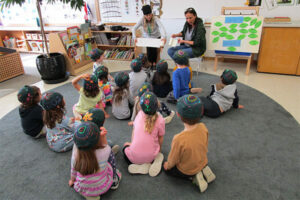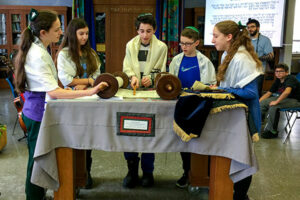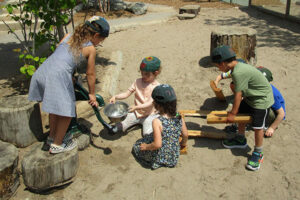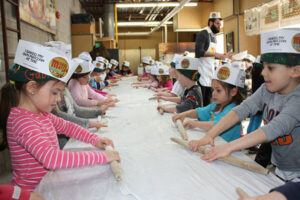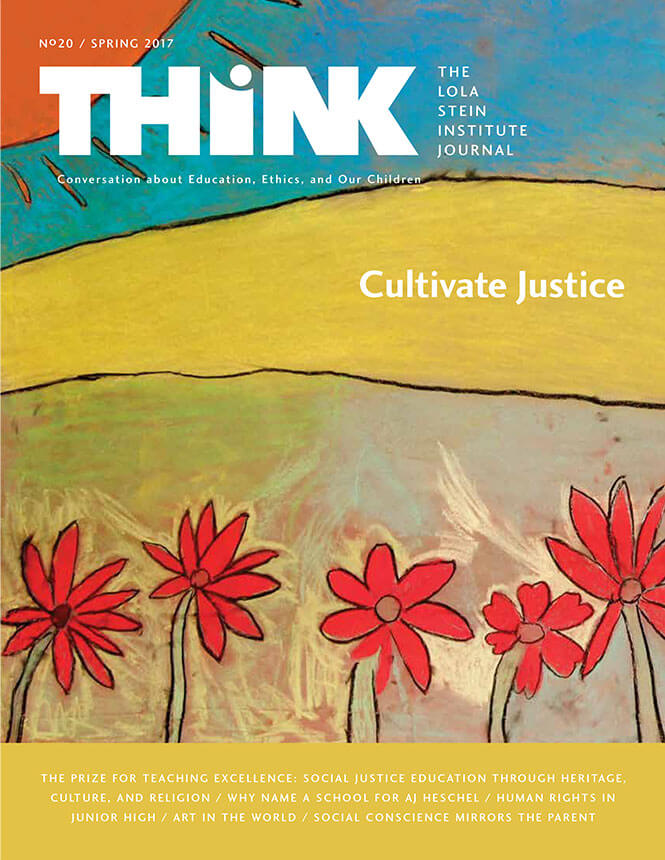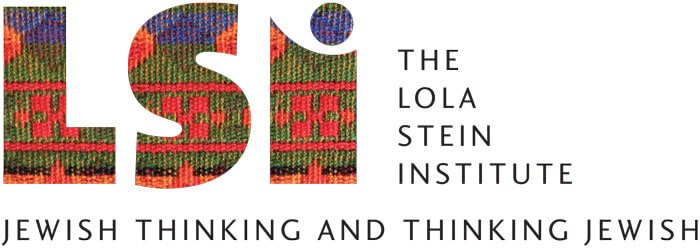- How We Teach

- First Column
- Second Column
- Third Column
- Case Studies

- First Column
- Second Column
- Culture & Community

- First Column
- Second Column
- News & Views

- Admissions

- First Column
- Second Column
- Support Us

- About

- First Column
- Second Column
- Parent Hub
- Attend an Open House
- Take a Tour
- Donate Now
- Calendar
- Blog
- 416-635-1876
- Search
The Jewish Foundations of a Junior High Human Rights Curriculum
An Interview with Dana Ezer
Dana Ezer finds junior high students to be particularly egocentric and ripe for a “me versus you” conversation; they think about how they fit into the social scene, and who they are in the universe. Dana tells them to keep it up and to compare their circumstances to those of others. She asks them not just to look at the “other,” but at all human relationships. Juxtaposing “us and them” exposes truths that bring students to reflect on humanity, and then, human rights.
The junior high human rights programme at THS has been developed by a team of educators committed to revealing the Jewish foundations of what is now known as the study of human rights. This senior Jewish day school programme uncovers new learning beneath old themes, as students reconsider what perhaps they took for granted in earlier grades. Using traditional modalities of Jewish study, which by now are very familiar to them, the human rights curriculum links social justice learning to the students’ Jewish identity. Dana begins her explanations citing the Jewish Proverb, “to know from where you have come, to where you are heading..” (Pirkei Avot 3:1)
Jewish pedagogy #1: By grade 6 the students are comfortable with multi-layered meaning. They have learned Rashi, the medieval French commentator, who interpreted ancient Jewish text. Rashi questions what he finds and generates his answers by looking back into the text and referencing midrashim, rabbinic commentaries. With Rashi as their model, the students learn that asking questions, and being unsettled with what they are reading, is a Jewish tradition. Early Rashi training has taught them to investigate text for meaning and to begin unravelling disparate relationships and references.
Jewish pedagogy #2: Also by grade 6, the students’ learning process has become their identity; they are people who listen, converse, question. Their formula is to sit and study with a peer in the time tested tradition of Chevruta, understanding that a second perspective brings deeper learning.
Dana emphasizes how this bit of Torah or Talmud, “this artifact,” has served hundreds of generations and a single unifying language, spoken through thousands of years, still speaks for and to all Jews everywhere. Saying, “every Jew can do this,” she invites her students to ask “what can I find for myself right here, in these words, as opposed to other places?” The wisdom is there and is theirs.
Dana teaches that “Judaism is a religion that asks you to be an active participant…We don’t take things in passively, we are active.” In Jewish text, her students find themes that relate their own life experiences and they apply the layered meanings to the plight and power of humanity; the process renders them active participants in their tradition.
Two Projects
These samples are described in more detail online as models for the Prize for Teaching Excellence 2016. (http://www.lolastein.ca/teaching-excellence-contest.html)
- Pay it Forward Purim
Dana tells me, “Our project is on the highest level. We want to foster their love for tzedakah. The students love it. We set them up to understand that doing tzedakah is not easy, but also, being Jewish is not easy. It’s a huge responsibility, but it is also the best gift.” Tzedakah is Hebrew for righteousness and charity. On the holiday of Purim, the Mitzvah (Commandment) is Matanot L’evyyonim (to give gifts to the poor).
Dana explains that Purim asks us to look inwards and give something to others that we know will have value to them because we have seen it has value to us. The holiday celebrates a Jewish woman in Diaspora who is pressured into action by a cousin, yet makes her own choices. Although assimilated, Esther first fasts, a Jewish modality, to help her focus inwards and strategize a brilliant plan. She uses the gift she has, her sexuality and beauty, and saves the Jewish people.
The story is one of chaos and chance. The Persian King draws lots; fate falls against the Jews and he agrees to annihilate them. Dana’s students go to an unsettling place, into the winter night to meet the homeless, who live and die by chance. They deliver something of value to the men and women they come upon and also offer dignity; first, a food package and clothes, then a second package for each recipient to give to someone else. Each recipient becomes a benefactor.
Mordechai had warned Esther, that, queen or not, she would fall too: Don’t think you will be excluded. You are a Jew because it’s in your blood. Esther wrought an edict from the King giving Jews the right to protect themselves; salvation through self-defense. The message is: You can fight for your lives. The students share what they have and rekindle dignity in the Toronto cold.
- Human Rights Speeches
Being the voice is difficult – it is easier to stay quiet. Dana says “especially junior high girls like to be invisible at this age; it is easier not to put yourself out there. But that is anti-Jewish.”
To embrace the personal challenge is a lesson itself. There are always choices; students can sit back and let someone be bullied, or not. “Challenge is to know who you are and to follow that; to trust your instincts because you are educated.”
The students again use a familiar Jewish study process. The rabbinic method is to look at text, ask questions, read commentators, go back to text, and understand it differently. Students bring rabbinic analysis into daily life. In Judaic studies class, they collect articles about current events, reviewing a wide variety of sources. They pick a topic they connect to personally; perhaps it is education, narrowing to education in Afghanistan and Malala Yousafzai.
Thinking critically in the rabbinic tradition, students ask who is the author, what is the story about, who else has written, how does it connect to other topics. They learn not to get caught up with taglines, but to read media carefully, and work to understand the subject thoroughly.
Lifting out pieces of text and applying their meaning to real life experiences is also rabbinic process. Students ask what Judaism says about their topic and look to ancient text. For example, in the Talmud, causing embarrassment is described as akin to murder; the redness on a person’s face is red like blood.
In the Book of Isaiah, the people are fasting while their workers work and all proceeds as usual. On God’s behalf, the prophet cries out,
Is such the fast I desire, a day for men to starve their bodies? …No, this is the fast I desire: Unlock the fetters of wickedness…Share your bread with the hungry and take the wretched poor into your home… do not ignore your own kin.
In “The Reasons for My Involvement in the Peace Movement” Rabbi Abraham Joshua Heschel writes,
For many years I lived by the conviction that my destiny is to serve in the realm of privacy.. Three events changed my attitude. One was the countless onslaughts upon my inner life, depriving me of the ability to sustain inner stillness. The second event was the discovery that indifference to evil is worse than evil itself…The third …was my study of the prophets of ancient Israel,… There is immense silent agony in the world, and the task of man is to be a voice for the plundered poor, to prevent the desecration of the soul and the violation of our dream of honesty. From Moral Grandeur and Spiritual Audacity, p.225
Dana Ezer says, “Getting up and speaking is Jewish. Using their voice for good is Jewish.”
Pam Medjuck Stein , Chair of The Lola Stein Institute and Editor of Think MagazinePam co-founded the Lola Stein Institute in 2003. She was a founding parent of The Toronto Heschel School in 1996 and served on its Board of Directors as Treasurer, Co-Chair, and Director. She is active across the community and currently sits on the Board of Directors of the Canadian Jewish News, the Canadian Friends of the Shalom Hartman Institute and the North American Alumni Delegate Council of the Wexner Heritage Foundation. She and her husband, Michael Stein, recently established The Diabetes Leadership Foundation to strengthen organizations that mentor better diabetes self-management.
Pam earned a Master of Laws from the London School of Economics, pursued further training in cultural property in London and Paris and practiced law in Toronto. Pam introduced collective copyright management to Canadian visual artists in 1984 by establishing VIS ART Copyright Inc. linking Canadian artists to international copyright management through UNESCO. She has been Co-Chair of the LEAF Foundation (Women’s Legal Education and Action Fund) and a Fellow of the Aspen Institute for Humanistic Studies.
PREVIOUS ARTICLE
Finding the Familiar in Grade 2NEXT ARTICLE
The Prize for Teaching Excellence 2016Special Feature
Second PrizeTodd Clauer: Upper School Social Justice ProjectFirst PrizeErin Buchmann: Indigenous AwarenessA Report by Ruth BurnsteinThe Prize for Teaching Excellence 2016What Do We Have in Common?Finding the Familiar in Grade 2Our Sages Tell Us
A Mirror Reflection of UsThe Social Conscience of Our ChildrenColumns
An Interview with Dana EzerThe Jewish Foundations of a Junior High Human Rights CurriculumRecommendations for Children and the People Who Love ThemGood Books by Gail BakerPerspectives
 The Lola Stein Institute (LSI) is a centre of inventive educational thinking and addresses the challenge to re-frame schooling for the exigencies of our times.Home > THINK Magazine > Spring 2017 > The Jewish Foundations of a Junior High Human Rights Curriculum
The Lola Stein Institute (LSI) is a centre of inventive educational thinking and addresses the challenge to re-frame schooling for the exigencies of our times.Home > THINK Magazine > Spring 2017 > The Jewish Foundations of a Junior High Human Rights Curriculum

